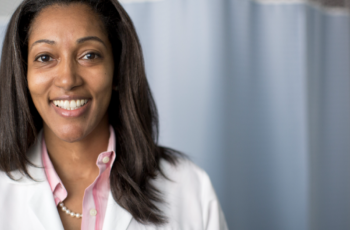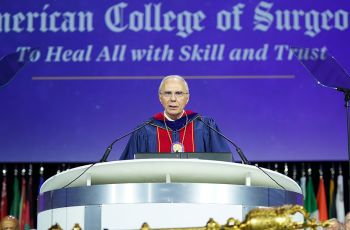Emergency physicians are now deploying a home-monitoring program for patients who test positive for COVID-19 in the emergency room but are then released from the hospital. Leading the program and subsequent study are Drs. Neal Sikka and Erin Kane.
“There is a significant amount of anxiety among patients being discharged from the emergency room and sent home with a diagnosis of COVID-19,” said Dr. Neal Sikka. “In addition, some people will get worse at home and could use support for decision making on where and when to seek care again.”
Dr. Sikka says some patients after discharge can quickly develop COVID pneumonia and get worse rapidly. “Home monitoring might lead to earlier interventions. We really wanted to help patients manage this new disease and its many unknowns more safely at home.”
The new program is available for any patient testing positive for COVID-19 in the emergency room and then being discharged. The follow-up will be done with symptom monitoring, temperature checks, and virtual visits.
“As emergency room physicians, we are seeing patients return with worsening symptoms or suffering at home for many days and facing the uncertainty and anxiety of trying to determine when to return to the hospital.”
Remote monitoring is not new to GW’s emergency department. Physicians have checked in virtually with patients with chronic conditions like heart failure, high blood pressure, diabetes, and COPD. In a grant-funded study, physicians discovered there are positive effects of monitoring patients' vital signs collected at home - reducing hospitalization, hospital days, and even overall better control of the condition. “Now we are attempting to apply a similar model to an acute disease, COVID-19. It’s a different challenge, trying to help patients isolate at home, prevent unnecessary travel, and reduce the stress associated with the infection. But similar to chronic disease in that, we are trying to identify those who are getting worse as early as possible.”
Dr. Sikka relays one of his earliest experiences with COVID patients. “This patient was in his 20’s and was seen on a Tuesday and diagnosed. He returned the next day because he started feeling short of breath. His evaluation in the ER showed an oxygen saturation of 99% which is very good. He found this very reassuring and was quickly discharged home. With home monitoring and a quick telemedicine visit, he may have saved the 2nd visit to the ER and on the ED side reduced exposure to health care workers and PPE use.”



